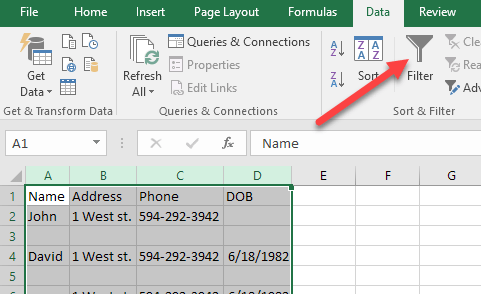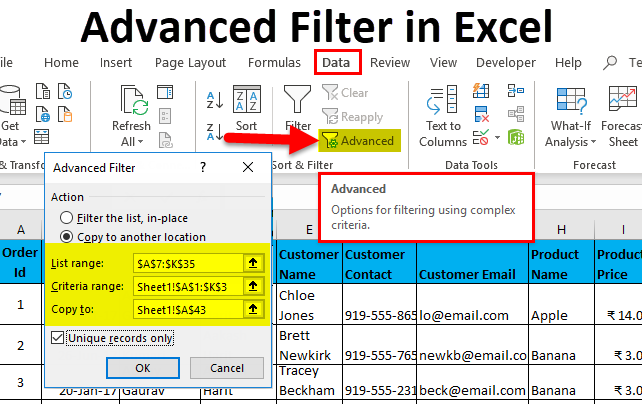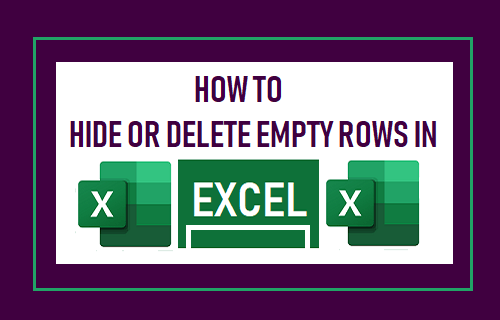
Now all we need to do is select Blanks from the options and press the OK button. Whether we open up the Go To menu then click Special or we go directly to the Go To Special menu, we will arrive at the same Go To Special menu. Press Ctrl + G to open up the Go To menu then click on the Special button to open up the Go To Special menu. There’s also a handy keyboard shortcut for the Go To menu. Go to the Home tab ➜ press the Find & Select command ➜ choose Go To Special from the menu. Now we can use the Go To Special command to select only the blank cells. The easiest way to do this will be to select the first cell (A1 in this example) then hold the Shift key and select the last cell (A14 in this example).
#How to filter and delete blank columns in excel manual#
What if there are many blank rows spread across our data? Manual selection would be a pain!ĭon’t worry, there is a command in Excel to select all the blank cells for us.įirst, we need to select a column of our data including all the blank rows. Selecting and deleting rows manually is OK if we only have a couple rows to delete. There is also a very handy keyboard shortcut to delete rows (columns or cells). Go to the Home tab ➜ click on the Delete command ➜ then choose Delete Sheet Rows. We can also delete rows using a ribbon command. When the rows we want to delete are selected then we can right click and choose Delete from the menu. Hold Ctrl key and click on a row to select it. But if we only have a couple rows then the manual way can be quicker. Delete Blank Rows Manuallyĭon’t worry, we’ll get to the easier methods after. In this post, we’re going to take a look at 9 ways to remove blank rows from our Excel data. They’ll make certain things like navigating around our data much more difficult.īut the good news is there are lots of ways to get rid of these unwanted rows and it can be pretty easy to do it. This seems a little more messy, because worksheets with a lot of cross referencing may have the formulas inadvertently altered.Blank rows of data can be a big annoyance.

However, it involved copying data and deleting the original list.





 0 kommentar(er)
0 kommentar(er)
